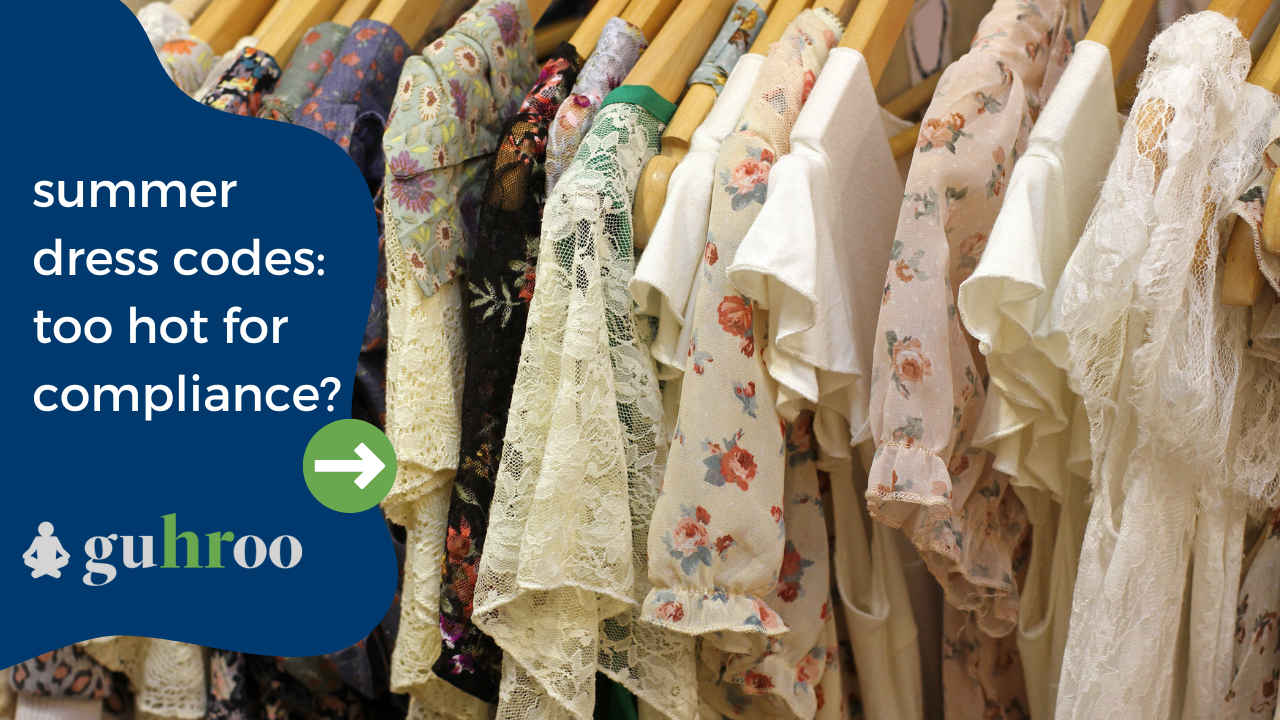There are several implications to be aware of in regards to workplace dress code policies in the summer. When establishing your dress code, it is important to consider the summer months and how it impacts your employee’s dressing decisions. Depending on the industry the dress code will change drastically. Ensure you are considering both their needs and your organization’s company culture to best determine the best dress code.
In today’s workplace, oftentimes many organizations do not include a dress code in their policy or handbook. It is important to always add this due to any issues that may arise with different dress code challenges, especially during the summer.
Health concerns (physical and mental stress)
During the hot summer months, it is important to consider the health of employees who will be performing work outside or in a facility without air conditioning. The company may need to alter its dress code in order to reduce the physical stress of employees working outdoors, as physical stress can lead to reduced cognitive ability and heat-related injuries and illnesses. In addition, some employees may be protected under the American with Disabilities Act (ADA) which may require reasonable accommodations.
Productivity levels (includes motivation)
The productivity levels within the business may be reduced if employees are dressed in a manner that is distracting to themselves or others. Therefore, it is important to ensure that dress codes allow for maximum productivity. For example, if an employee is wearing a baseball cap during an office meeting, others may find that to be a distraction.
Safety concerns (injury and accident prevention)
There are several safety concerns to consider if dress codes are not properly enforced. Even in extreme temperatures, it is critical that employees wear all recommended and required safety equipment. For example, those in a construction field should not wear sandals; those in the medical field should avoid exposing unprotected skin and wearing loose accessories (such as jewelry) around hazardous chemicals, equipment/machinery (such as wheelchairs), and other things (i.e. syringes).
Image/Professionalism
Even in the summer months, it is important that the company portray a professional business image. For example, allowing pilots to wear swim trunks could certainly result in decreases in customer confidence levels.
It is encouraged to write comprehensive policies that cover the business dress code. The management team must consider productivity, safety, and regulatory compliance when writing the dress code policy. It is vital to consider whether the dress code could create a charge of discrimination. A workplace dress code for summer months should not discriminate against members of a protected class under civil rights laws such as gender discrimination, religious discrimination and race discrimination. It is important to stay consistent for all exceptions to the policy and to apply consequences for all violators of the policy. Considering these factors will ensure the company’s dress code maximizes summer productivity and minimizes the potential for legal exposure.
Our HR Guides can help organizations of all sizes establish their dress code that aligns with their organizational culture.




